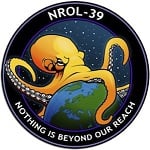What is the explanation for high technology in Star Wars?
I don’t think I understand the question. People invented it?
People and aliens.
It would never occur to me that Star Wars technology would need an explanation besides people inventing things over time. According to Lucas the story was originally going to be told by R2D2 when he was 2000 years old. It was going to be in our far future and our galaxy. “A long time ago in a galaxy far, far away,” was going to mean in R2D2’s past, told at a time when he was far away from here. They decided to drop the narration, and all that remained was that opening line - which has led people to think the whole story happened in the distant past in a galaxy other than ours. But this clears up a few little things like saying womp rats are a couple meters long.
Was R2D2’s narration intended to be subtitled…?
A: beepboop whistle.
12 parsecs?! Wow! And then what happened?
No, the narration would have been spoken. R2D2 originally had a human sounding voice with sarcastic or snarky dialog. Supposedly there’s an early script floating around that contains his lines. Random trivia: the name R2D2 is attributed to sound engineer Walter Murch’s notation for “Reel 2, Dialog track 2”. I love that one.
In the Lord of the Rings, what is the explanation for swords and other metal goods?
At some point in the past, the arts of smelting, smithing, casting were discovered, refined over the centuries, different races and cultures advanced them in different ways, and eventually led to swords, mithril shirts, magic rings, etc.
Same thing with star wars, in-universe they have tens of thousands of years of history, I think canonically the old Republic was founded 25-or-so thousand years ago, if you go back that far in real earth human history and you’re pretty much at the point where a handful of weird wolves are starting to get comfortable enough with humans to let us start domesticating them.
And at that point in the star wars timeline, space travel and other advanced technology is already pretty well-established, so there’s probably at least that long again of incremental technological advancements leading up to that point.
Basically they just got a massive head-start on us
As far as how and where the technology is made, we get little glimpses of it here and there, droid factories on Geonosis, corelian shipyards, various mechanics, scrapyards, tinkerers, etc.
But that’s all just kind of backdrop. Star wars is a space opera adventure thing, not a mockumentary about the history of lightsabers and hyperspace drives, or a how-its-made for blaster pistols and gonk droids. It wouldn’t make sense for most star wars media to really go into depth about that kind of stuff and probably would piss people off if they did (not that most star wars fans don’t exist in a perpetual state of being angry at star wars about something anyway)
You wouldn’t go into a Fast and Furious movie expecting a whole history and mechanics lesson on automobiles, the movies are focusing on a handful of people who (race cars? Fight terrorists with cars? I really don’t know I’ve actually never seen any of them) there’s a whole in-universe world around them where all of those things happened/are happening out of sight and out of mind but it’s not directly relevant to the plot so it gets kind of glossed over, you can just assume most of the history and engineering stuff has been handled by people somewhere off-screen at some point in time.
Same with star wars, there’s untold trillions or more people scattered across millions of inhabited planets working dead-end jobs making widgets that have built on millennia of science and technology, but the stories focus on a handful of freedom fighters, smugglers, soldiers, warrior monks, etc. who mostly just use those things and probably don’t have much more idea how their hyperdrive works than you do about the alternator in your car.
By the time of the movies humans have had hyperspace travel for something like 20,000 years. Seems it stands to reason the trillions of sentient lifeforms working and communicating during that time would create some cool shit
Star Wars is a nice movie but it’s a pretty mediocre SF. They mix very low and very high technology in mostly absurd ways. You have FTL and lasers but robots are mostly shit, AI is very basic and its use weirdly limited, warfare looks pretty much like today, only in space. I know they did it like this because of cinematography but as a SF it’s just not that good. So I really wouldn’t bother trying to rationalize the tech. It’s mostly like this because “it looked nice”.
warfare looks pretty much like today, only in space
not even that. Star wars warfare looks like what someone from the boomer generation thought warfare looked like in WW2. But really it’s what movie warfare from WW2 looked like, because showing actual war would confuse and bore people. lucas was enamored with serials.
I meant “today” in SF sense, like current century vs some time 1000 years from now :) Of course your right, the battle scenes were inspired by WW2 movies.
My favorite SF warfare descriptions come from Banks. Battleships firing at each other from light years away or hiding inside suns, everything controlled by AI, microsecond long battles. Absolutely not adaptable to screen.
banks / culture series offers a lot of fascinating insights. but yeah, hard to adapt for movie audiences… similar to the constraints of storytelling and level of nerdistry you can cram into a film frame… I felt the same way about Tom Clancy’s mil-fantasy level of intense inspection about the hardware and users motivations… but he rarely went full silly like Dale Brown with the execution, but very little of clancy’s obsession with detail gets into the films made from his IP.
thinking about these tropes has led me to think I need to make some games exploring them heh
A few years ago I’d have jokes about data ports being the same fitting as power sockets, but USB-C has ruined that
I get the impression in the Star Wars universe that technological advances have slowed to a near halt. All of the tech is really old, and very little has changed for quite some time. A brand new X-wing or lightsaber or landspeeder isn’t all that different from one that was built 50 or even 100s of years ago. That’s one of the reasons why stuff in Star Wars looks so used - as tech doesn’t go obsolete, stuff ends up staying in service until it’s completely worn out and every bit of life has been squeezed from it.
That’s why you don’t really see where the technology comes from - the big innovators, discoveries, etc. are long in the past. Though we do get to occasionally see factories and manufacturing facilities where things are being built.
I always had the impression that the advanced tech takes a large amount of resources not readily available everywhere. The rebels are scrounging for resources from any place that defects or will trade with them, while the empire is free to demand, raid, and liberate whatever supplies they needed. Part interchange is going to be more important to rebels strapped for material, so they use all similar, basic, reliable stuff. We see lots of shinier, smoother equipment in the cities where luxury is accessible and full of variation. Meanwhile, the vast shiny imperial hangars are comfortably stocked with lots of clean ships for all different roles.
The shitty robots never feel that far off from the US military. There’s all kinds of should-be-obsolete equipment that sticks around just because it fills a role (usually one role) and it still works. Regarding the low quality of their performance and capabilities, I’d imagine microprocessor manufacturing is still hard without perfect conditions. Clean rooms, electron microscopes, and general precision well beyond human visual capability. In our world now, if China were to try to take Taiwan by force and the chip manufacturers really do blow up the facilities, we’re screwed. Globally. It’ll set us back decades because that’ll reset chip size and density. Even if we magically restart facilities that used to be around, they’ll be on the older, larger architectures we can’t fit in ourr pockets
So, basically, what we’ve seen coming from most of the wartime interactions the US has had with most of the receiving countries. HMMV vs Hilux. 15 different standard guns vs AK-47. Unstoppable convoys vs IEDs. Satellite comms vs horseback messengers. And then the USA still roots for Luke & crew…
Even if we magically restart facilities that used to be around, they’ll be on the older, larger architectures we can’t fit in ourr pockets
ok so you’re not wrong on the fundamentals but… you should know - you’d need to go back to the 80s for the fabrication scale to actually have much effect on the size of devices.
A combination of increasing size and reducing capability. I’m not saying we can’t have pocket-sized phones, but 2 decades puts us at about the Motorola Razor and Palm Pilot
that’s a good way to put it.
Didn’t one of the new movies have a whole thing about the mil-industrial complex?
Unless otherwise specified, my assumption is that laborers working for oligarchs made the tech
Some of their technology is vastly ahead of ours, other technologies are way behind. The behind stuff is far more interesting. Comms in Star Wars is weird and anachronistic with other tech in the show. Getting clear signals for comms seems nearly impossible.
I also get a giggle out of tech used in the show only to drive plot: like how protagonists can scan ships for life forms but protagonists also only power down ships to evade the eye of a passing baddy ship.
Anacrhonistic?
They have instantaneous duplex comms, over millions of light year distances, without line of sight! That’s FTL communications.
It is modeled after the style of early radio comms for the cinematic drama, but technologically speaking they would be so far advanced from us that it might as well be magic.
Same place any technology comes from I suppose.
deleted by creator
star wars also has the wierd thing of having magic in it as well. the night sisters.
The Incom Corporation, of course!






